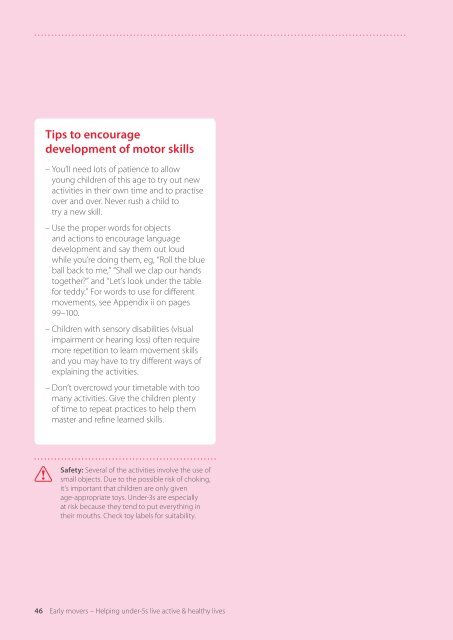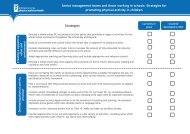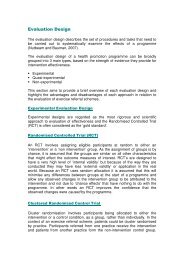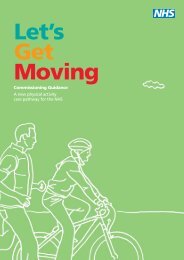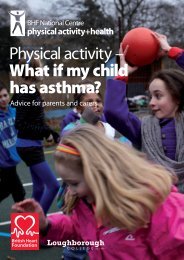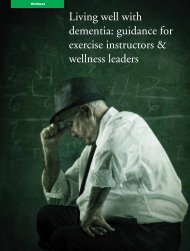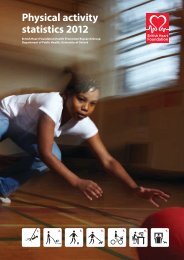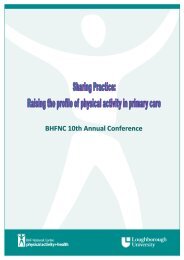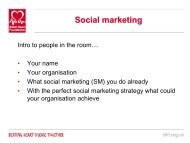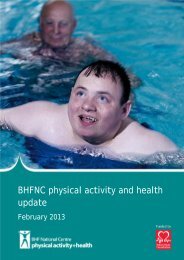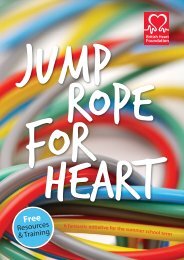5 Practical ideas for physically active play - BHF National Centre ...
5 Practical ideas for physically active play - BHF National Centre ...
5 Practical ideas for physically active play - BHF National Centre ...
- No tags were found...
You also want an ePaper? Increase the reach of your titles
YUMPU automatically turns print PDFs into web optimized ePapers that Google loves.
Tips to encouragedevelopment of motor skills– You’ll need lots of patience to allowyoung children of this age to try out newactivities in their own time and to practiseover and over. Never rush a child totry a new skill.– Use the proper words <strong>for</strong> objectsand actions to encourage languagedevelopment and say them out loudwhile you’re doing them, eg, “Roll the blueball back to me,” “Shall we clap our handstogether?” and “Let’s look under the table<strong>for</strong> teddy.” For words to use <strong>for</strong> differentmovements, see Appendix ii on pages99–100.– Children with sensory disabilities (visualimpairment or hearing loss) often requiremore repetition to learn movement skillsand you may have to try different ways ofexplaining the activities.– Don’t overcrowd your timetable with toomany activities. Give the children plentyof time to repeat practices to help themmaster and refine learned skills. Safety: Several of the activities involve the use ofsmall objects. Due to the possible risk of choking,it’s important that children are only givenage-appropriate toys. Under-3s are especiallyat risk because they tend to put everything intheir mouths. Check toy labels <strong>for</strong> suitability.46 Early movers – Helping under-5s live <strong>active</strong> & healthy livesSection 5 – <strong>Practical</strong> <strong>ideas</strong> <strong>for</strong> <strong>physically</strong> <strong>active</strong> <strong>play</strong> 47


